#learningstyles
Explore tagged Tumblr posts
Text
"The Connection Between Me and My Learning Style!"

The picture above shows the different styles that I find interesting. Well, all of them are! But, let me present you my most favorite one which also resonates me.
https://www.time4learning.com/learning-styles/visual-spatial.html
THE VISUAL LEARNING STYLE!
Why? Visual Learning resonates me in a way that visual learning suits me. Without visual style of learning, I find it hard to learn. I prefer seeing topics, ideas, or titles in the form of visual representations.
As for my partner, his chosen style is interpersonal or also known as social learning style. Although it is applicable and effective, I still choose visual style. I want to learn by sight as much as possible.
You? Have you find out which style you have the connection with?
5 notes
·
View notes
Text

"Learning Styles, Goal Setting, and Adaptive Coping Strategies."
1. What learning styles do you find interesting?
(Steph) Reading and Writing are my preferred learning methods. When I read I recognize letters, understand their sounds, and combine them into words and sentences.It also remains in my mind when I read aloud. When I write I can express thoughts and ideas in written form, because it involves using letters, words, and sentences to communicate effectively.
(Koleen) Auditory is my preferred learning method. I enjoy listening to profs explain concepts and engage in active conversations about the topic. I’m also Good at remembering things I have heard. I might have a knack for remembering song lyrics, quotes, or conversations.
2. From the physical, material, spiritual, sexual, political, and digital selves, which do you want to experience growth with?
(Steph)
Spiritual self is the one I want to set goals with, Like daily prayer, cultivating regular practice to deepen my connection with Him. Finding meaning and purpose and exploring my spiritual beliefs and how it guides my life choices.
Having a deeper connection to faith. Specific: Attend weekly religious services and participate actively in church. Measurable: Tracking the number of services attended and reflections written. Achievable: Starting with attending once a month and gradually increasing participation. Relevant: it aligns with my desire to strengthen my faith and, Time-bound: Attend weekly religious services for the next 3 months.
(Koleen)
Physical self is the one I want to set goals with, I can absolutely relate about setting physical activity goals about how I need to move forward and think of something or even plan something.
How can I even think of what I want to do. Specific: Clearly defined and leaves no room for ambiguity. Measurable: Progress can be tracked and quantified. Achievable: Realistic and attainable within my capabilities and my resources. Relevant: Aligned with my values and overall life goals and, Time-bound: Has a clear deadline or time frame.
3. How do you prioritize your health in times of challenging situations and what Adaptive Coping Strategies do you use in order to grow with the situation?
Life throws curve balls, and when tough times hit, it's easy to forget about ourselves. But looking after our health is super important then, even more so. Think of it like this, if your car needs gas and regular check-ups, so does your body and mind. When things are stressful, try to sleep well, eat good food, and move a little each day. A short walk can really help. Talking to a friend or family member about what you're going through can also make a big difference. And most importantly, be kind to yourself, don’t be too harsh, we can do more than what we are known for. Small acts of self-care, like drinking enough water or taking a few deep breaths, small steps toward self-care add up to big improvements in how we feel and handle tough situations.
Facing life's challenges often requires a shift in perspective. Reframing, or seeing a situation from a different angle, helps us find the positive or a lesson learned instead of dwelling on the negative. Acceptance, acknowledging what we can't control, frees up energy to focus on what we can. Breaking down large problems into smaller, manageable steps like problem solving, makes us less daunting. Seeking support from our loved ones or professionals provides valuable perspective and emotional relief. Prioritizing self-care through exercise, meditation, or hobbies, recharges our energy and resilience. Finally, viewing challenges as opportunities for learning and growth allows us to emerge stronger and wiser.
Written by: Stephanie Shane Y. Manaloto
Koleen M. Galang
2 notes
·
View notes
Text
1.0 : Decipher Your Personal Learning Style!
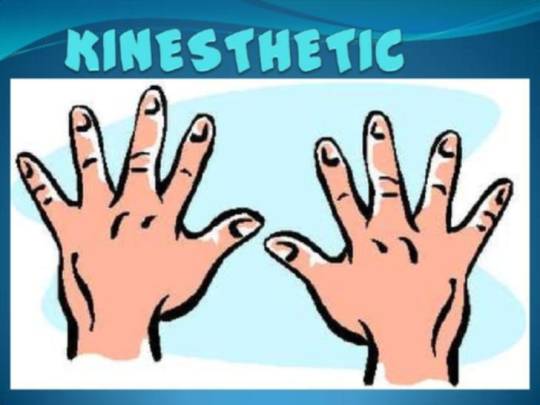
https://youtu.be/u_rmUkj9g0k?si=Y1u839V3n3_ecQZU
Highlighting Interesting and Commonly Used Learning Styles:
The Visual Learning Style- this learning style refers to the ability of a person to learn by sight. People with this type of learning often prefers seeing graphs, letters, image, or any visual representations to learn.
The Auditory Learning Style- this learning style refers to the style of studying by hearing the details. This type is often used in school settings when students have to listen to their teachers as they speak, perfectly paired up with the visual style.
The Kinesthetic Learning Style- this refers to learning by movements, experience, and actions. Basically, like when a person wants to learn dancing, demonstrations or tutorials made using movements are effectively working for the type of people that uses this style.
The Logical-Mathematical Learning Style- this refers to the sense of using reasons. Individual with this style often uses reasoning to know more or give sense to topics they wanted to understand.
Unlocking Resonance with My Learning Style:
My Learning Style is the Kinesthetic. With the use of actions and movements, as well as experiences, I learn new things in my everyday life. I usually try to practice and learn with other people's action, or learn from my own actions. This style resonates with me due to the fact that movements I see that are ethically right are the actions I apply to my self.
Me and My Partner's Style:
Both of us prefers kinesthetic. We both want to learn by seeing movements. Which means that I find his style effective, as it is my own style.
Now, wanna share your thoughts? What's your personal learning style? I'm curious! Do we have the same style?
3 notes
·
View notes
Text

My Learning Styles: Get to Know How I Learn Best <( ̄︶ ̄)>!
These are my learning styles (・∀・):
Social (╹▽╹)
I absolutely love interacting with others! Whether it’s a casual chat or a deep discussion, exchanging ideas helps me gain new insights and see things from different perspectives. (≧▽≦) I find that discussing concepts—whether in a group or one-on-one—makes learning so much easier and more enjoyable!
Visual (✧ω✧)
Show me a picture, a video, or a live demo, and I’ll understand it way faster! (╹ڡ╹) Seeing things in action helps me absorb details more effectively and makes even the most complex ideas feel simple!
Kinesthetic (ノ≧∀≦)ノ
I learn best when I get to move around and do things myself! Sitting still and just reading? Not really my thing. (¬‿¬) I love hands-on activities, experiments, and real-life applications because they make learning more fun, exciting, and easy to grasp. The more I do, the more I remember!
Verbal (´。• ω •。`)
Listening to explanations is great, but what makes it even better? Talking about the topic while doing something related to it! (╹ᗜ╹) I enjoy engaging conversations that help me process information more effectively. Learning feels way more natural when I can discuss and apply concepts at the same time!
I learn best through social learning (人*´∀`)!!
I'm best at learning through social interactions because I genuinely love engaging with people who share a mutual interest in conversation. (╹▽╹) There’s something exciting about exchanging thoughts, ideas, and experiences with others! Whether we're discussing our favorite films, music artists, anime or just random fun topics, I find it easier to absorb information when it’s part of a lively and meaningful discussion. (≧◡≦) Learning feels more natural and enjoyable when it's shared with someone who’s just as interested as I am!!
My partner's and my learning styles(ㆁωㆁ):
My partner’s learning style is visual; he prefers watching and seeing things in action, which helps him understand better. On the other hand, my style is social; I thrive on interaction and love talking things through with others. We may not have the same learning style, but that’s what makes us a great team! We both bring something different to the table. (^◡^) It’s true for everyone—our learning styles come with their own pros and cons. The key is knowing how to use what works best for each of us to keep learning fun and effective!
Image link :
https://www.saintleo.edu/about/stories/blog/infographic-breaking-down-the-6-types-of-learning
4 notes
·
View notes
Text
Exploring the Power of Learning Styles: Unlocking Personalized Paths to Success.
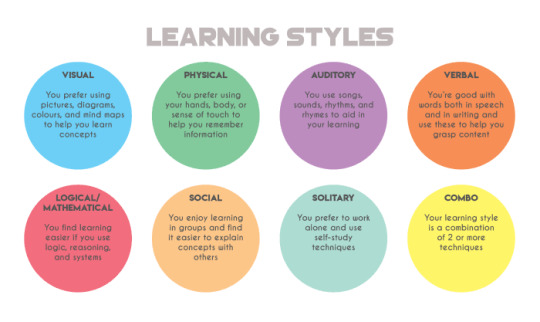
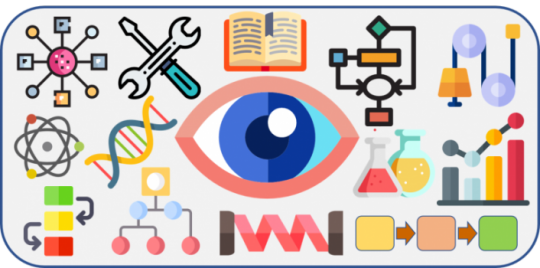

❔ Have you ever wondered how your mind absorbs, processes, and adapts to new ideas?
❔ What’s your preferred way of learning?
Let me share my preferred learning style.😊
👂 I relate to the auditory learning style because I learn best when I hear information. Listening to podcasts, discussions, or lectures helps me understand and remember things better. I often repeat things out loud or talk to myself to process new ideas. Overall, hearing things clearly and repeatedly makes it easier for me to grasp concepts.🥰
#MyPartnerLearningStyle
I can see how visual learning works well for my partner. Watching videos or seeing written notes helps her understand faster. I think it’s interesting because sometimes I struggle with learning just by looking at something, but she really benefits from it. It shows how everyone has their own way of learning, and that’s what makes it work for us in different ways.
All learning styles are valuable and effective in their own right.✨
🌟 These learning style helped me achieve these awards.
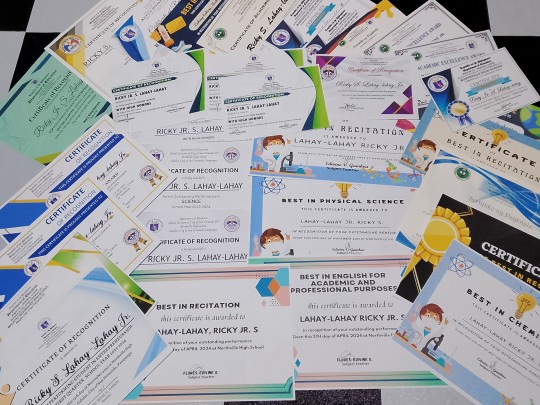
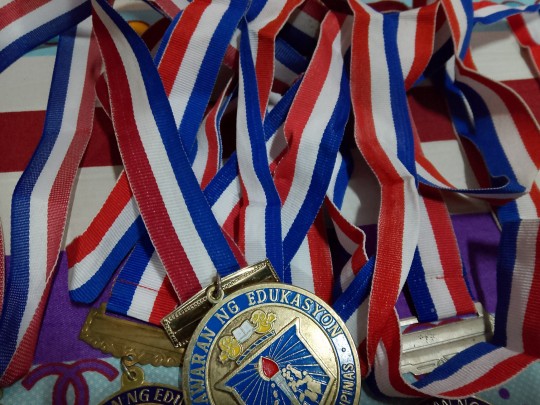
"Your learning style is the key that unlocks your potential; find it, and the world becomes your classroom." 🤍
Never Stop Learning!
📌 Now it's your turn, share yours with me!
References:
2 notes
·
View notes
Text

Effective learning styles:
1. Auditory Learning: A learning style through listening to someone and processing that idea.
2. Visual Learning: A learning style that is using images, figures, diagrams, and videos to understand the idea they are pertaining to.
3. Interpersonal Learning: A learning style with a group of people to share a lot of information and combine it as one.
4. Intrapersonal Learning: It is a learning style that gives you solitude to give yourself time to learn things alone.
5. Verbal Learning: A learning style that uses a voice to communicate your ideas that is very efficient and effective for everyone.
6. Kinesthetic Learning: Kinesthetic learners thrive through hands-on activities and physical engagement, which are essential for their learning process.
7. Logical Learning: using their brain for logical and mathematical reasoning. They typically work through problems and issues in a systematic way, and they like to create procedures for future use.
My preferred learning style:
VISUAL LEARNING:
I resonate most with the Visual learning style because I learn best by utilizing graphs, tables, charts, maps, colors and diagrams. an i also tend to learn holistically, instead of sequentially, or in parts. One of the benefits of being a visual learner is easily seeing the big picture. As a result, these learners may sometimes miss out on the details.
Other learning style:
auditory learning, are also effective, especially when discussing topics or explaining concepts out loud. I find that listening to podcasts or participating in group discussions enhances my understanding. I also appreciate visual learners, as their use of diagrams and organized notes helps simplify complex topics. By combining different styles, learning becomes more effective and adaptable to various situations.
References:
Learning style:
https://coronatodays.com/the-7-different-learning-styles-and-what-they-are-daily-infographic/
3 notes
·
View notes
Text
Discover Your Learning Style
youtube
Different Learning Styles and How It Connects Me
I connect with reading and writing as my primary way of learning because they allow me to engage with information at my own pace. When I read, I get to explore new ideas and viewpoints that help me broaden my understanding. I learn best when I can focus on the content, take notes, and reflect on the material. This process enables me to absorb key details and find connections, making it easier to remember what I’ve studied.
Writing plays a crucial role in helping me organize and clarify my thoughts. Through writing, I can solidify the concepts I’ve encountered by putting them into my own words. It forces me to think critically and link new information to what I already know. Often, it’s through writing that I fully grasp the material, as I break down complex ideas and make them more understandable.
Reading and writing work hand-in-hand to strengthen my learning. Reading introduces new ideas, while writing allows me to process, reflect on, and communicate what I’ve learned. This combination deepens my understanding and helps me engage with the material in a meaningful way. By consistently incorporating both reading and writing into my learning, I make sure I am actively engaging with and internalizing the knowledge I encounter.
#learningstyles#educational purposes#whatsyours?#itstimetounderstandyourself#mylearningstyle#Youtube
2 notes
·
View notes
Text

📌 Discovering My Learning Style: A Personal Reflection 🎓
🌟 My Learning Styles I thrive in multiple learning styles, including: 📝 Verbal – I absorb information best through words, whether spoken or written. 🎨 Visual – Diagrams, charts, and images help me understand concepts deeply. 🎧 Auditory – Listening to lectures, podcasts, and discussions enhances my learning. 💃 Physical – Hands-on activities and movement make learning more engaging. 🧠 Logical – I prefer structured and analytical approaches to problem-solving. 🧘 Solitary – I enjoy self-paced study sessions where I can focus without distractions. 🔄 Combination – A mix of these styles helps me retain and apply knowledge effectively.
🚫 Least Preferred Style: Social Unlike some learners, I don’t particularly enjoy social learning. Group discussions and collaborative tasks can sometimes feel overwhelming or distracting for me.
👥 Learning with My Partner Interestingly, my partner and I share the exact same learning styles! This makes studying together seamless and effective, as we both understand and process information in similar ways.
📷 Infographic Source: "What's Your Learning Style" via Pinterest (https://pin.it/7arKjEkU7)
🎯 How About You? What learning style works best for you? Let’s discuss in the comments! 💬✨
4 notes
·
View notes
Text
Choosing the Right Study Materials: A Student's Handbook
tudying effectively is a crucial component of academic success, and the choice of study materials plays a significant role in this process. The right study materials can make learning more efficient, while the wrong ones can lead to confusion and frustration. In this blog post, we will explore the importance of selecting the right study materials, from textbooks to online resources, and provide guidance on how to discern reliable sources, utilize study guides effectively, and adapt your materials to your learning style and needs.
1. The Role of Study Materials:
Study materials are the tools that students use to understand and master the subjects they're studying. These materials can include textbooks, lecture notes, online resources, study guides, and more. The right materials provide clarity and structure, helping students grasp complex concepts and reinforce their learning.
2. Choosing the Right Textbooks:
Textbooks are often a primary source of study material in many academic disciplines. Here are some tips for selecting the right textbooks:
Read Reviews: Look for reviews or recommendations from professors and students who have used the same textbook. Their insights can be valuable in making an informed choice.
Check Editions: Ensure that you have the correct edition of the textbook. Older editions may lack updated information and can cause confusion.
Consider Your Learning Style: Different textbooks have different writing styles. Some are more concise and others more detailed. Choose a style that aligns with your learning preferences.
3. Online Resources:
The internet offers a vast array of resources that can complement your study materials. When using online resources:
Check Credibility: Ensure that the websites you use are reputable and the information is accurate. Look for government sites, educational institutions, and established publications.
Balance Resources: Don't rely solely on online materials. Use them as supplements to your primary study materials.
Be Mindful of Distractions: The internet can be a double-edged sword. While it offers valuable resources, it can also be a source of distractions. Practice discipline when using online study materials.
4. Study Guides:
Study guides, often provided by professors or available in bookstores, can be excellent companions to your primary materials. Here's how to use them effectively:
Outline Your Curriculum: Study guides typically align with your course curriculum. Use them to organize your study plan and ensure you cover all essential topics.
Practice Questions: Many study guides include practice questions and quizzes. These can be instrumental in testing your knowledge and preparing for exams.
Adapt to Your Learning Style: Study guides can be versatile. Adapt their use to your learning style, whether that's summarizing key points, creating flashcards, or making annotations.
5. Adapt to Your Learning Style:
One of the most critical aspects of selecting the right study materials is to align them with your individual learning style. Everyone learns differently, and understanding how you learn best can significantly impact your study material choices. Consider the following learning styles:
Visual Learners: Visual learners benefit from diagrams, charts, and infographics. They should seek materials that include visual aids.
Auditory Learners: Auditory learners learn best through listening. They might benefit from recorded lectures or podcasts.
Read-Write Learners: These learners prefer written materials. Textbooks and note-taking are valuable for them.
Kinesthetic Learners: Kinesthetic learners learn best through hands-on activities. They should engage in practical applications of their studies whenever possible.
Selecting the right study materials and adapting them to your learning style is a continuous process. As you progress through your academic journey, you'll refine your study material choices to align with your evolving needs and preferences. Remember that there's no one-size-fits-all approach, so explore and experiment with different resources until you find what works best for you. The ability to select and utilize the right study materials is a crucial skill for any student aiming for academic success.
#StudyTips#StudentLife#AcademicSuccess#StudyMaterials#EffectiveStudying#LearningStyles#StudyHabits#EducationMatters#OnlineLearning#Textbooks#DigitalResources#StudyGuides#LearningResources#StudentResources#TimeManagement#CredibleSources#AdaptToYourStyle#StudySmart#OnlineEducation#LearningJourney
2 notes
·
View notes
Text
The Tailored Trail: Why Personalized Learning is Not a Luxury, But a Necessity
Imagine a classroom where every child is handed the same textbook, the same assignments, and the same expectations, regardless of their unique talents or challenges. It sounds fair, doesn’t it? But fairness, as it turns out, is not always synonymous with effectiveness. A one-size-fits-all approach to education often leaves some children bored and others bewildered—like asking a hedgehog to sprint…

View On WordPress
#AdaptiveLearning#AlternativeEducation#ChildDevelopment#EducationReform#GrowthMindset#HomeschoolingLife#IndividualizedEducation#InquiryBasedLearning#LearningBeyondTheClassroom#LearningStyles#ParentingWithHumor#PersonalizedLearning#RaisingCuriousKids#SupportingKids#TailoredTeaching#TeachingResilience
0 notes
Text
instagram
#DMIT#ChildDevelopment#Neuroscience#EducationMatters#SmartParenting#FutureReady#MultipleIntelligence#UnlockPotential#LearningStyles#CareerGuidance#jkscareeradvisor#ParentingTools#ScientificApproach#KnowYourChild#BrainBasedLearning#Instagram
0 notes
Text
Ensuring the Best Learning Experience: Key Questions to Ask Your Child’s Online Tutor

This change of learning has availed time for students to be attended individually and flexibly through online lessons.’ Since parents want the best for their child especially regarding learning, it is important for them to find the right online tutor.It is essential for a parent who wants their child to be tutored online to search the right online tutor. Good questions enable you to get a feel of the tutor and how they approach the task as well as how suitable this tutor is to meet the needs of your child. Below are the ten questions to ask your child’s private tutor to ensure that they get the best out of the session.
Why Asking the Right Questions Matters
In lecturing the tutor gets an opportunity to demonstrate their knowledge and at the same time allows your child to see whether the teacher is most sympathetic with their learning style. It also creates a possibility to develop a positive interaction that will contribute to your child’s improvement.
Building Trust and Communication between Parents and Tutors
Since communication is the key, tutors get to grasp your expectations hence helping parents know how their child is faring. Clarity also guarantees that every person is on the same page toward promoting and helping the student.
How Understanding Your Child’s Learning Style Enhances Tutoring
Children are unique in how they learn; understanding their modality, whether they are visual, auditory, or kinesthetic helps the tutor to teach. Any tutor who will adopt these approaches to learning will help to make the process more interesting and productive.
Essential Questions to Ask Your Child’s Online Tutor
What is your teaching approach for my child’s online learning style?
Knowing how the tutor intends to approach your child with Online learning style that will enhance the strengths and minimize or address the weaknesses. You have to be specific and inquire about the details on how they do it to suit the needs of each type of the learners.
How do you tailor lessons to meet my child’s unique needs?
Every child may have specific special needs in their learning process. It is also useful if your child needs refreshing on concepts such as math: the tutor should be able to adapt to the student’s specifications and provide a program that caters to the student’s needs but is also enjoyable in the form of interactive online learning tools.
Can you provide regular updates on my child’s progress?
They provide the regular update of the data that informs parents and helps to monitor the academic performance. Explain how frequently the tutor will communicate progress and what kind of indicators they will use.
How do you keep my child engaged in a virtual setting?
The children are able to stay interested because the online tutor incorporates teaching activities, child individualized lessons and instructional media to improve the interest level. Such may involve taking quizzes, playing games as well as using examples from their everyday life. Moreover, enquire about the ways the tutor shall be consistent in the delivery of lessons, flexibility in converging to the child’s learning style as well as handling situations such as distracted or loss of focus during virtual lessons.
What resources or tools do you use to enhance online learning?
An effective tutor incorporates technology in their teaching so as to effectively support the learning outcomes using techniques such as writing on electronic boards, use of educational applications, power point presentations and specific subject learning applications. They should also explain to the learners how these tools are used in the enhancement of learning outcomes.
How do you handle difficulties or setbacks in learning?
Learning setbacks are common. A good tutor should have strategies to address these challenges, such as breaking down complex concepts or offering additional practice sessions.
How can I support my child’s learning at home?
It is recommended that parents play an active role in ensuring that the knowledge your child gains during tutorial sessions is effectively practiced. This could be done by requesting for advice from the tutor concerning environment that because it is communication supports studying and other additional studying techniques.
What goals should we set for my child’s progress?
Discussing the goals we want to achieve in regards to our studies keeps us both on track and motivated. It is important for the tutor to have outlined such milestones on how to achieve these and pass this information to the trainee.
How do you ensure a positive and motivating learning environment?
When the atmosphere created is positive you are likely to achieve more with students. Inquire with the tutor on their style of motivation, affirmation,giving positive feedback and rewarding work done.
What steps do you take to address my child’s academic challenges?
Every child faces hurdles in their educational journey. Inquire about the tutor’s strategies for addressing specific challenges, such as improving reading comprehension or mastering math skills.
The Importance of Regular Communication with Your Child’s Tutor
Keeping Active in the Learning Process
Parent’s participation assists in guaranteeing that what tutor is doing corresponds to the student’s goals. Communication with the tutor also gives you an opportunity to evaluate the performance of a child and areas which needs more focus.
Promoting a Partnership Model of Education
Education is a team effort. Letting parents, students and tutors form a synergy that supports the system develops and encourages a learning culture.
Selecting the right online tutor is one of the most crucial decisions that you make for your child. These ten questions will give you a proper approach to understand whether the tutor’s teaching methods are suitable for your kid and their goals. Optimal information sharing between parents and tutors is the key to the communication of a constructive attitude toward learning.
End up seeking a tutor that understands your child’s needs? Join MyBrainWire now and experience the most effective, online tutoring service, tailored to ensure your child achieves their potential.
FAQs
Q1: Why is it important to ask these questions?
Asking the right questions helps you evaluate the tutor’s compatibility with your child’s needs and ensures a personalized learning approach.
Q2: How can I stay informed about my child’s progress with an online tutor?
Request regular progress reports and set up periodic meetings with the tutor to discuss your child’s academic growth.
Q3: How can I support my child’s learning at home?
Encourage a structured study routine, provide a distraction-free learning space, and reinforce the concepts taught during tutoring sessions.
Q4: What should I do if my child struggles during online lessons?
Communicate openly with the tutor to address the issue and explore alternative teaching methods or additional practice sessions.
Q5: How can MyBrainWire help my child with personalized online learning?
MyBrainWire offers expert online tutors who customize lessons based on your child’s unique needs, ensuring an engaging and effective learning experience.
1 note
·
View note
Text
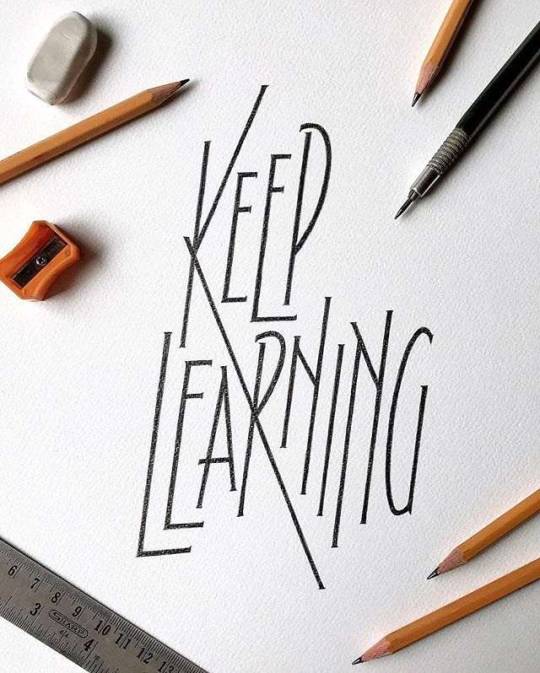
15 key terms with definitions. MODULE 12: "Learning to Be a Better Person"
Short-term memory: Imagine a temporary notepad in your mind, holding information for a short time, like remembering a phone number just long enough to dial it. This memory is limited in capacity and duration, fading quickly unless actively rehearsed. It's crucial for tasks like following instructions or carrying on a conversation.
Long-term memory: Think of a vast storage vault in your brain, holding information for extended periods, like remembering your childhood home or a significant life event. Long-term memory can hold a vast amount of information, and it's organized in complex ways to allow for efficient retrieval.
Memory formation: This is the process of converting those fleeting short-term memories into lasting long-term memories. It involves strengthening connections between neurons and creating new neural pathways. The more you actively engage with information, the stronger the memory becomes.
Memory recall: Retrieving information from that long-term storage vault is like finding a specific file on your computer. The process of recall depends on cues and associations, and it can be influenced by factors like stress or emotion.
Neural pathways: Imagine connections between brain cells (neurons) forming pathways like worn paths in a forest. These pathways strengthen through repeated use, becoming more efficient for specific tasks. Learning new skills or acquiring knowledge involves creating and strengthening these neural connections.
Synapse: Think of a tiny gap between neurons, like a bridge connecting two islands. Information travels across this gap through chemical messengers called neurotransmitters. The strength of these connections, and the speed of transmission, affects how effectively information is processed and stored.
Neurotransmitters: These are the chemical messengers that transmit signals across synapses, like carrying information across the bridge. Different neurotransmitters have different effects on learning and memory. For example, dopamine is associated with pleasure and motivation, while acetylcholine is involved in memory and attention.
Writing down your work: This engages both your hand and your brain, helping you process information more deeply. The act of physically writing helps you solidify information in your memory.
Regulation checklists: These are lists that help you keep track of your progress and manage your learning process. They can help you stay organized, prioritize tasks, and identify areas where you need to focus more.
Graphic organizers: Visual tools like maps, charts, and diagrams help you organize and connect ideas. They make information more accessible and memorable by creating visual representations of relationships between concepts.
Active reading strategies: Techniques like underlining, summarizing, and asking questions help you engage with the text. These strategies make reading more active and less passive, leading to a deeper understanding of the material.
Active listening strategies: Techniques like taking notes, paraphrasing, and asking clarifying questions help you focus on what you're hearing. These strategies enhance your ability to process and retain information from lectures or conversations.
Reflection: Taking time to think critically about what you've learned and how it connects to your understanding. Reflection helps you solidify your knowledge and make connections between different ideas.
Metacognitive skills: This is the ability to think about your own thinking. It involves understanding how you learn best, identifying your strengths and weaknesses, and developing strategies to improve. Metacognition is key for becoming a more effective and efficient learner.
Learning: about gaining new knowledge, skills, or understanding. It's a process of change, where we transform our understanding of the world or how we do things. Learning happens through experience, observation, and practice. It involves actively engaging with information and applying it to new situations.
To conclude, It’s Understanding how memory and learning work is crucial for our growth and development. Short-term memory helps us hold onto information for a brief time, while long-term memory allows us to store important knowledge and experiences. The process of memory formation involves creating strong connections in our brains, which become more effective with practice and engagement. Using strategies like writing things down, active reading, and graphic organizers can help us learn better and remember more. Additionally, reflecting on what we've learned and using metacognitive skills can make us more effective learners. By thinking about how we learn and what strategies work best for us, we can improve our ability to absorb and recall information. Overall, learning is a continuous journey that involves actively engaging with new ideas and experiences, helping us grow and adapt in an ever-changing world.
written by: Manaloto, Stephanie Shane Y.
Galang, Koleen M.
0 notes
Text
Kinesthetic learners, like me, learn best through hands-on activities and physical movement, making them excellent at sports and crafts where we can actively engage with the material to understand it, logical-mathematical learners have an innate ability to recognize patterns and solve problems using logic and numbers, often excelling in subjects like math and science. Both types of learners can benefit from incorporating elements of the other in our learning approach, such as using physical manipulatives to visualize mathematical concepts.
Logical-mathematical learners, like me, learn best with visual aids, computers, and practical assignments. Since these students can have trouble with ambiguity, be careful to give them a framework with a set of guidelines, objectives, and processes. A kinesthetic learner retains information better when they can actively interact with the material through actions like touching, manipulating objects, and moving their bodies rather than just listening or reading; they frequently enjoy hands-on activities, role-playing, and demonstrations to effectively grasp concepts. Additionally, kinesthetic learners learn best through tactile experiences and physical movement.
Looking at the core of my own learning style, I see that my partner finds success with his learning style. The main distinction between visual and intrapersonal learners is that the former rely on visual cues to learn, while the latter prioritize internal introspection and self-understanding. Visual learners primarily absorb information by seeing it through images, diagrams, and colors, while intrapersonal learners learn best by reflecting on their own thoughts, feelings, and motivations.
1 note
·
View note
Text


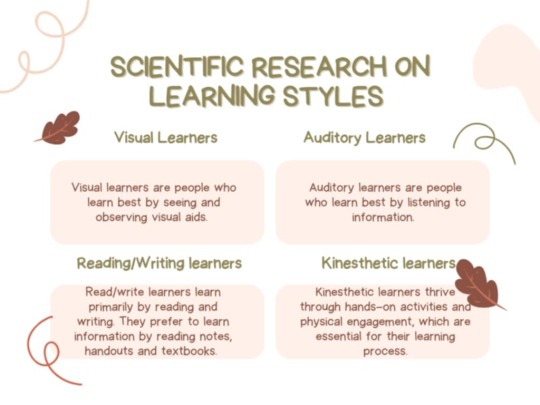
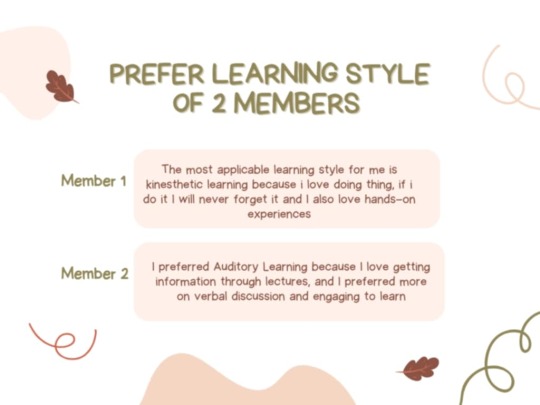

Four types of learning styles.
Learning to be a better person.
1 note
·
View note
